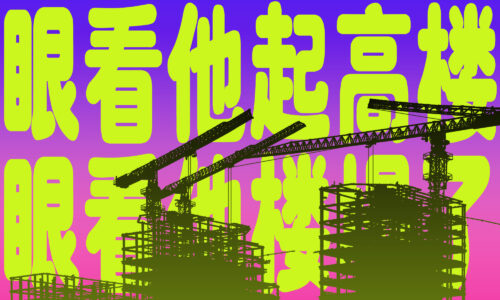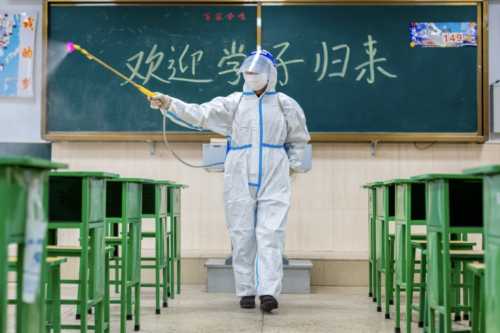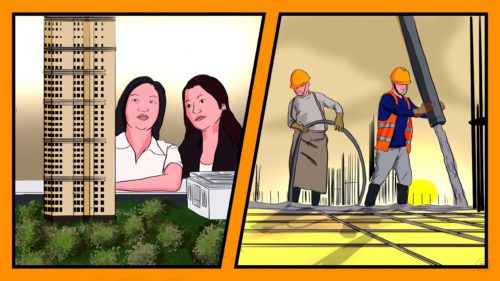China’s ‘three red lines’ policy to safeguard the property sector isn’t working yet
After decades of strong sales growth and investor optimism, in 2021, China’s property sector slumped as developers defaulted, sales slowed, and housing prices dropped. In response, Beijing implemented a “three red lines” policy to restore the real estate’s sector — but it’s not working (yet).

On August 20, 2020, the Ministry of Housing and Urban-Rural Development and the People’s Bank of China held a joint symposium with China’s largest property developers, Country Garden 碧桂园, Evergrande Group 恒大集团, and Vanke 万科, and proposed to implement a policy to monitor and manage loan regulations for the real estate sector. This policy is known as the “three red lines” (sān dào hóng xiàn 三道红线), which refer to three requirements for a developer’s balance sheet (excluding advance receipts):
- Asset to liability ratio must be greater than 70%
- Net debt to equity ratio must be less than 100%
- Cash to short-term borrowings ratio must be less than 1
The policy categorizes real estate developers by means of four colors, with each color corresponding to the number of “red lines” that are overstepped. Each overstepped line is accompanied by annual growth restrictions on interest-bearing liabilities:
- Green indicates that a company meets all three requirements of the “three red lines”, and the liability growth rate cannot exceed 15%.
- Yellow indicates that one line has been crossed, and the liability growth rate cannot exceed 10%.
- Orange indicates that two lines have been crossed, and the liability growth rate cannot exceed 5%.
- Red indicates that all lines have been crossed, and the liability growth rate cannot increase at all.
The government required that all three real estate developers in attendance at the symposium attain the debt reduction targets by June 30, 2023. The overall objective is to reduce leverage, increase liquidity, and mitigate financial risks associated with heavy debt refinancing strategies.
How much liability is acceptable?
Average debt-to-equity (D/E) ratios vary in each industry, and high debt is not unusual in the real estate sector. The average D/E ratio of real estate developers is approximately 352%, as they make use of high leverage for large buyout transactions. Thus, high D/E ratios can be beneficial as leverage can significantly affect equity returns. Debt itself is not to be feared in this industry, but the question that Beijing’s “three red lines” policy seeks to answer is how much liability is acceptable before a company is not able to service its debts and fails to meet its obligations to creditors, investors, and home buyers.
At the time of the policy’s introduction in August 2020, 109 of 224 domestic real estate bond issuers possessed above average growth rates of interest-bearing debt, which means that nearly half of these issuers were at financial risk as a result of highly leveraged portfolios. In fact, in 2020, Evergrande Group 恒大集团, China’s largest investment holding company, was not only the world’s largest real estate developer in terms of assets, but also the sixth-most indebted company in the world with a debt of $100 billion.
By imposing conservative financial expectations with its “three red lines” policy, Beijing acted proactively to stabilize the deteriorating financial health and growth debts of domestic property developers in order to preempt a financial crisis. The government is seeking to inhibit property developers’ ability to expand and fund operations with debt, but this is unlikely to resolve the causes of the property sector’s financial woes.
How will this affect property developers?
So far, increased regulatory pressure has catalyzed some interesting trends in China’s property sector:
- The number of mergers and acquisitions accelerated due to increased financial pressures and constraints on smaller real estate companies.
- Small- and medium-sized developers are struggling or outright defaulting on their loan repayments due to a lack of liquidity and competitiveness, and low operational turnover.
- Land acquisition rates are slowing down as developers’ priorities shift towards rebalancing balance sheets.
- IPOs of real estate developers on the Hong Kong Stock Exchange are being delayed, and applicants are submitting multiple filings because high debt levels are indicative of high risk and, therefore, do not adhere to listing standards.
Companies are prioritizing debt reduction over earnings, but according to Pān Hào 潘浩, a senior analyst at Beike Research Institute, the “quality, safety, and stability” of the rapid debt reductions “remain to be seen.”
Is it working?
Balance sheets in the property sector have continued to deteriorate even after the implementation of the policy. According to Beike Research Institute, in 2020, the proportion of defaulted real estate bonds in the market increased from 6.7 billion yuan ($1 billion) in 2019 to 20.3 billion yuan ($3.04 billion) in 2020. Matters continued to worsen into 2021 as nearly half of China’s 30 largest property developers by sales were found to have overstepped at least one of the three red lines, and the share of defaulted real estate bonds reached a record high of 46.8 billion yuan ($7.01 billion), or 29% of all defaulted bonds in the market.
Beike Research Institute’s 2021 interim report of real estate developers showed that of the 85 real estate companies it monitors: 32 were green; 32 were yellow; 13 were orange; and 8 were red.
According to an S&P Global Ratings forecast, more Chinese property developers are expected to default this year due to tighter regulatory constraints on their finances. S&P-rated domestic developers will need to pay off a total of $18 billion of maturing debt.
All in all, the ‘‘three red lines’ policy has borne little fruit in the short-term, and the prospects for China’s real estate sector remain gloomy.





